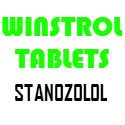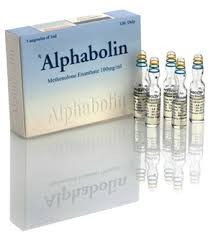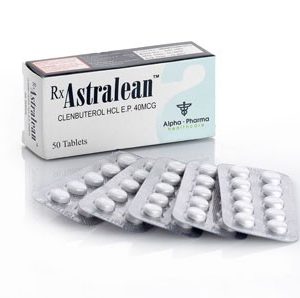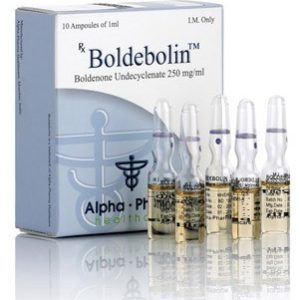Description
Human growth hormone is a naturally occurring substance secreted by the anterior pituitary gland. It is essential for normal growth and development. Growth hormone (GH)is secreted by the pituitary gland since birth and the levels peak around late adolescence. In the 2nd decade of life, the levels of growth hormone began to decline. For more than 40 years growth hormone has been available to treat specific medical disorders. However, in the past 3 decades, growth hormone mania has hit the market and everyone wants to take it. The middle aged and elderly seem to think GH can reverse aging, the young teenagers want to build their bodies and the sports athletes want to perform better. Of all the drugs abused by sports athletes, Growth hormone probably ranks in the top three.
What Human Growth Hormone?
Human growth hormone, abbreviated as HGH, hGH and GH, is the hormone that activates cell production, growth, and metabolic processes within the human body. Secreted by the anterior pituitary located just inside the base of the skull, GH is responsible for working in conjunction with other hormones in the body to stimulate and regulate proper human growth and development. GH levels generally reach their all time high at puberty and significantly decline around the age of 40.
Growth hormone is readily available from many health food stores and spas. It is also widely available from many nutrient and alternative care practitioners. The growth hormones is frequently sold under other names like Genotropin®, Humatrope®, Norditropin®, Nutropin®, Saizen®, Serostim®)
Pharmacology
Most of the GH available is manufactured using recombinant DNA technology; the two types of synthetic HGH available are somatropin and somatrem. Both synthetic types have similar pharmacological actions. The synthetic forms once injected are impossible to distinguish from the naturally occurring GH. Growth hormone acts by binding to GH receptors on various tissues and stimulate a variety of cellular actions. GH has multiple physiological effects including regulation of metabolism, maintaining fluid and electrolyte balances, increasing skeletal and muscle mass. GH levels are generally increased during stress, sleep and exercise.
In which conditions do GH levels change?
There are a few medical conditions that can develop if levels of GH are either too low or too high. With an excess amount of human growth hormone the body may over produce cells causing acromegaly, a condition characterized by oversized extremities, rapid and continual cell growth, and a variety of other serious health complications; or pituitary gigantism, which results in extreme height due to over secretion of GH.
Medical conditions caused by GH deficiency can be serious as well, leading to a variety of short stature conditions that may severely impact overall health
Approved clinical uses of GH
The FDA has several approved injectable preparations of HGH. The growth hormone is only available with a prescription from a licensed physician. Synthetically derived (recombinant) GH was initially approved by the FDA in 1985 for the treatment of short stature due to GH deficiency (GHD). In the following years, GH continued to gain approval for the treatment of specific clinical conditions causing short stature and other complications related to lifelong GHD such as Prader-Willi syndrome, short stature caused by chronic renal insufficiency, Turner syndrome, idiopathic short stature, and intrauterine growth retardation. The FDA has also approved GH therapy as a treatment for growth hormone deficiency attributed to the presence of pituitary tumors. Another recent approved use for GH has been to treat adults who develop the wasting syndrome of AIDS.
There is a lot of evidence that shows that injection of GH in the above mentioned disorders can result in:
increased muscle mass and bone density
decreased body fat
improved mentation
increased exercise performance
increased cardiovascular tolerance to stress/exercise
Dosing
GH is never taken orally. It is always administered as an injection- either subcutaneous or intramuscular. GH acts pretty rapidly once it is absorbed in the blood stream. The dosing of growth hormone is still not fully known. While the latest research indicates it should be based on levels of IGF, many physicians dose it based on body weight. For adults, the dosing is about 0.01-0.1 mg/kg body weight. This dosing depends on the type of product and what it is to be used for. The currently available GH either comes as a powder or a liquid. The powder is solubilized in a saline solution before injection.
Side effects of growth hormone
GH can cause several side effects, which are disturbing. The most common include:
Generalized edema
Carpal tunnel syndrome
Joint and muscle pain
Neuropathies (e.g., numbness and tingling)
Increase blood glucose levels
Does one require a prescription for GH?
GH can only be legally prescribed for the aforementioned purposes approved by the FDA; however, many off-label uses for the hormone exist, such as athletic performance enhancement and anti-aging treatment. In most instances of off-label usage, the FDA has not approved GH treatment simply because the potential benefits of therapy do not outweigh the possible risks posed by altering the body’s levels of GH. While touted by some as a miracle cure-all, GH carries with it serious side effects that patients should take heed of before initiating treatment.
Potential risks of taking GH
With GH there is the ever-present risk of overdose, which can lead to the development of devastating conditions brought on by excessive GH production, such as acromegaly. Since GH stimulates cell growth, there is also the risk that GH may activate the proliferation of unwanted cells like cancer cells, causing the development of leukemia, prostate cancer, and malignant tumors in those undergoing GH therapy. Comparatively less serious side effects of GH include fluid retention, carpal tunnel syndrome, joint pain, and type 2 diabetes. Anti-agers considering GH therapy must carefully weigh the risks and benefits of treatment before deciding to follow through with the potentially harmful therapy.
Off Label Use
Bodybuilding
The major off label uses of GH are for anti aging and for bodybuilding. GH is one of the most widely abused drugs by sports athletes. The drug is widely available but is illegal to possess or sell. The majority of bodybuilder use a whole cocktail of drugs together with HGH. Which drug actually leads to better a body is difficult to know because these individuals do take so many drugs. Another reason why GH is widely abused by many athletes is because the drug is somewhat difficult to detect.
The exact number of individuals who take GH remains unknown but every now and then an occasional athlete will confess to abusing it.
For the bodybuilder, GH does not come cheap. Depending on where one buys from and from whom, the monthly costs can run anywhere from $500-$2000. And in some cases, the GH is fake.
Anti Aging
Another off label use of GH is in the quest for remaining youthful. Many people want to reverse the lines and wrinkles on their face and have turned to growth hormone. Despite all the hype about GH, it is not approved for anti aging treatment. And there is no evidence that it can reverse any lines, wrinkles or change skin texture.
Because of the much advertised success and popularity of human growth hormone, ineffective “copy cat” treatments sold mainly in pill form are purported to generate a $70 million industry. Anti-aging “suckers” will pay between ten and twenty thousand dollars a year for real GH injections, most commonly administered in an anti-aging clinic or medical spa setting.
Availability
The majority of individuals get their HGH through illegal means. In some cases, the product is stolen from pharmacies. Sometimes it is unscrupulous physicians who prescribe it for off label use. GH is also smuggled in from Mexico and Europe. There are also many pharmacies in cyberspace that sell GH. In the majority of cases, the internet pharmacies are run by physicians who simply write a prescription without seeing the patient. Many individuals buy GH this way and then sell it on the black market.
Even though the only appropriate way to administer HG is via an injection, there are many people who market GH as a spray pill or a topical gel. The GH molecule is only minimally absorbed when inhaled or placed underneath the tongue.
Limitations of testing
Synthetic GH is very difficult to detect in the body. The current methods can’t detect GH more than 48 hours after the last injection and most athletes are aware of this fact. A favorite question by any athlete today before he starts to take any illicit drug is if there is a test for it.
Sermorelin
Sermorelin is a relatively new drug which has been counterfeited in China from the original drug, Geref. Sermorelin is a biological active analog of growth hormone releasing hormone (GHRH) that is produced by the human hypothalamus to stimulate production and release of growth hormone by the anterior pituitary gland. Sermorelin is neither detected in the blood or urine after a certain time period. So for the moment, things are status quo with the sports organizations and only the dumbest athlete is ever caught with GH.
Sermorelin when administered takes at least 3-4 weeks to work before the effects are obvious. It gradually builds up strength and has none of the major side effects of Growth hormone. Sermorelin is generally designed to treat the aging population and is not an effective replacement for GH. If your body has no GH, then Sermorelin will do very little for you. Sermorelin costs anywhere from $300-$1000 for a month’s supply.
Control Status
The widespread abuse of HG has led to some Federal Regulations limiting it sells and distribution. The 1990 Anabolic Steroids Control Act now means that anyone possessing, selling, distribution GH is committing a crime. There are serious penalties for such acts and include jail time and monetary fines. In March 2007, a bill was introduced into the U.S. Senate to amend the Controlled Substances Act and add HGH to schedule III. GH is currently listed by the World Anti-Doping Agency and the International Olympic Committee as a performance enhancing drug barring athletes from using it.
Alternative designation
hgh, rhgh, hrgh, kefei, geno, genotropin, huma, humano, humanotrop, humanotrope, norditrop, norditrope, norditropin, rhgh genesis, hgh genesis, soma, somatrop, somatrope, Asellacrin, Crescormon, Genotropin, Grorm, Humatrope, Nanormon, Norditropin Penset, Saizen, Somatogenas-L, Somatogen-L, Somatonorm, sopin, omnitrope, rhgh-1, Epinephrine, Triiodothyronine, Thyroxine, Serotonin, Melatonin, Norepinephrine, Dopamine, Antimullerian hormone, Adiponectin, Adrenocorticotropic hormone, Angiotensinogen, angiotensin, Antidiuretic hormone, Atrial-natriuretic peptide, Calcitonin, Cholecystokinin, Corticotropin-releasing hormone, Erythropoietin, Follicle-stimulating hormone, Gastrin, Ghrelin, Glucagon, Gonadotropin-releasing hormone, Growth hormone-releasing hormone, Human chorionic gonadotropin, Human placental lactogen, Growth hormone, Inhibin, Insulin, Insulin-like growth factor, Leptin, Luteinizing hormone, Melanocyte stimulating hormone, Orexin, Oxytocin, Parathyroid hormone, Prolactin, Relaxin, Secretin, Somatostatin, Thrombopoietin, Thyroid-stimulating hormone, Thyrotropin-releasing hormone, Cortisol, Aldosterone, Testosterone, Dehydroepiandrosterone, Androstenedione, Dihydrotestosterone, Estradiol, Estrone, Estriol, Progesterone, Calcitriol, Calcidiol, Prostaglandins, Leukotrienes, Prostacyclin, Thromboxane, Lipotropin, Brain natriuretic peptide, Neuropeptide Y, Histamine, Endothelin, Pancreatic polypeptide, Renin, Enkephalin

![Evogene Alley 1 vial [1x10IU] Evogene Alley 1 vial [1x10IU]](https://steroids.to/wp-content/uploads/2015/01/590-Evogene-Alley-1-vial-1x10IU.jpg)
![Evogene Alley 1 vial [1x10IU] Evogene Alley 1 vial [1x10IU]](https://steroids.to/wp-content/uploads/2015/01/591-Evogene-Alley-1-vial-1x10IU.jpg)




![Nandrolone Decanoate Injection Genesis 10 amps [10x100mg/1ml]](https://steroids.to/wp-content/uploads/2014/05/580-Nandrolone-Decanoate-Injection-Genesis-10-amps-10x100mg1ml.jpg)